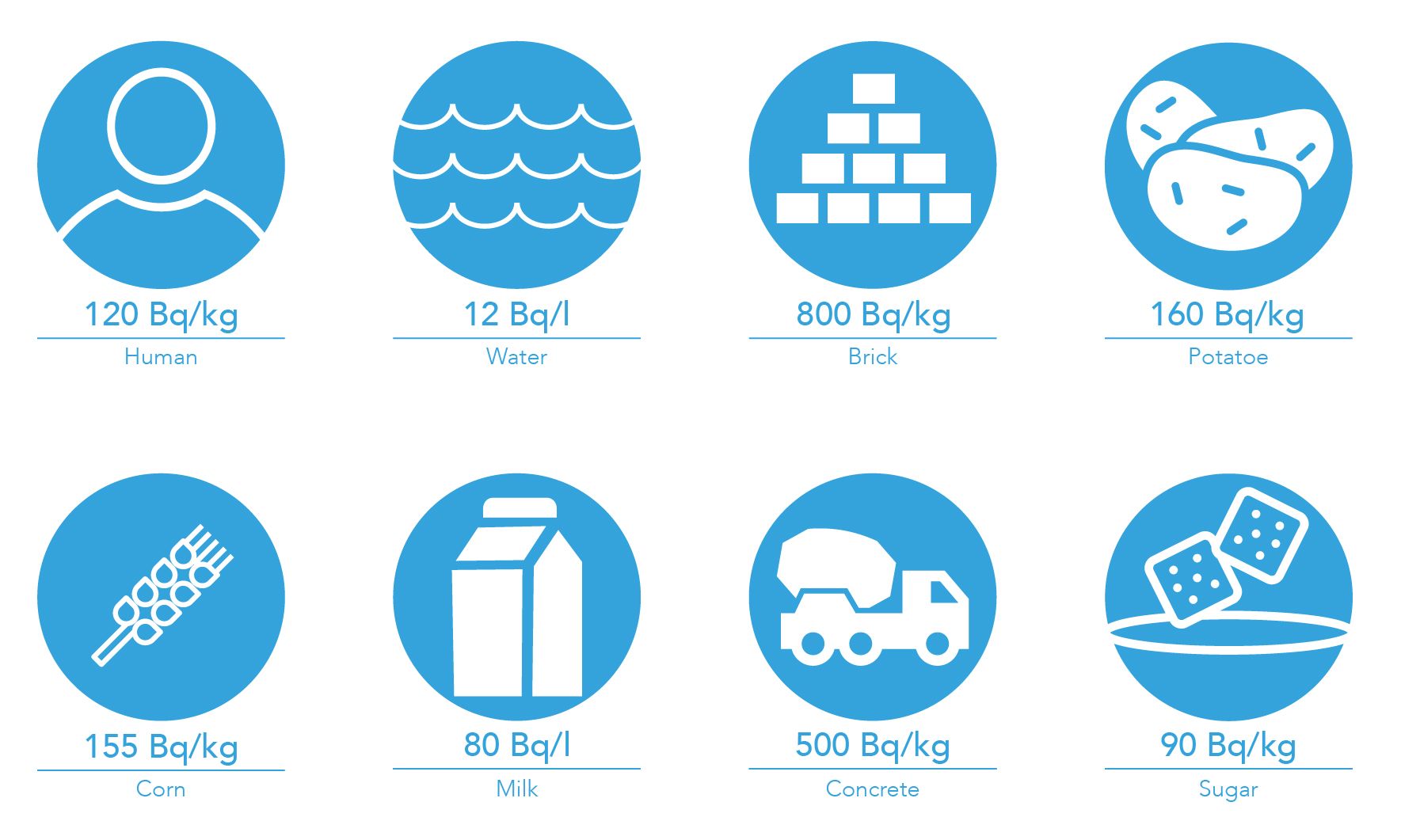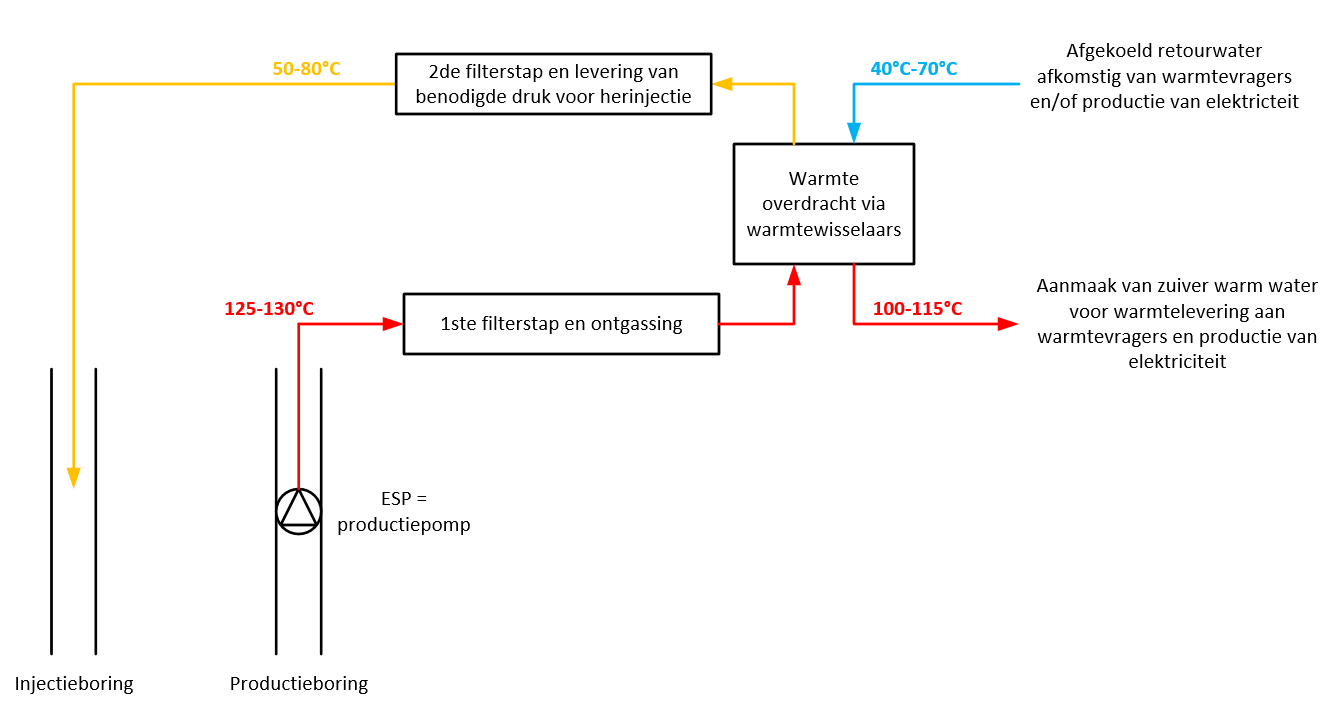Radioactive elements resulting from the decay of natural uranium and thorium are found everywhere in the Earth's crust. These natural radioactive substances are referred to as NORM, or Naturally Occurring Radioactive Materials.
Natural low-level radioactive material and deep geothermal energy
It is a well-known fact that geothermal energy can be a source of natural radioactivity. The Belgian Federal Agency for Nuclear Control (FANC) states on its website that 'natural radionuclides occur in rocks and may come into contact with groundwater. Sme radioactive elements such as radium and radon may dissolve in the water and be transported with the groundwater stream into geothermal reservoirs. The radioactive substances can be brought to the surface when water is pumped up by a geothermal plant, where they may be released or form deposits in the plants. Not all groundwater contains the same amounts of natural radioactive elements. Concentrations in the subsoil vary and depend on the geological properties of the source rock and the physical-chemical properties of the water (such as salinity, pH, hardness, etc.)'.
Expected radiation levels
Radioactive decay is a spontaneous phenomenon, the activity of which is expressed as the number of disintegrations per unit of time, or becquerels. In our everyday lives, we constantly come into contact with things in which radioactive decay occurs.
500 Bq/kg is the limit value above which waste is considered to be NORM-residue, from which point the waste must be processed by a FANC certified processor of NORM-residue.
Based on experiences in other countries and our own measurements carried out on the filter elements that are used while performing injection tests, the activity levels resulting from operation of the geothermal plant in Mol are expected to be between 1000 and 5000 Bq/kg for the filter elements. What we are concerned with here is alpha-emitting sources. There is only a risk if the contaminated elements from the geothermal plant were to get into the human body.
Anticipated risks
Under normal operating conditions, the geothermal water is pumped from the production well using a geothermal submersible pump or ESP (Electric Submersible Pump). The geothermal water then flows through the geothermal plants on the Balmatt site and is injected back into the same aquifer via the injection borehole. Most of the radioactive elements in the pumped-up water are therefore injected back into the subsoil with the water.
The geothermal water is brought to the surface but always kept in a closed loop. Once the heat has been extracted, it is pumped back down. The heat is transferred to a secondary or even tertiary circuit, which will contain no geothermal water at all.
NORM may be released when plants are opened. This occurs at the following times:
- Periodic maintenance of the plants requiring the geothermal water to be drained
- Periodic replacement of the filter elements
Periodic removal of scaling, if scaling reactions occur; the locations and conditions under which scaling occurs depend considerably on the configuration of the plant, but overall it can be said that changes in pressure and temperature are the primary cause of scaling.
Once borehole 1, the production well, was finished, a production test was carried out. As there was no injection well available at that time, the pumped-up water was collected in a specially constructed basin near the drilling site. Some of the pumped-up water has since been pumped back into the subsoil. The rest will also be injected later or processed by an approved company, if FANC approved.
Measures
1. A road map was developed in consultation with FANC and in cooperation with the nearby specialised companies SCK and Belgoprocess with regard to the following:
- The processing of geothermal water released while production testing is carried out
- Handling of the NORM issue while the geothermal plant is in operation.
2. VITO experts conducted an extensive survey among operators of geothermal power plants in other countries regarding the measures they take to monitor and control the NORM issue.
4. The plant has been designed in such a way that the risks of scaling are minimised. No significant increases in radiation levels were identified during operation of geothermal power plants in other countries where similar measures were taken during the design stage.
5. The handling of the NORM issue during operation of the power plant is summarised in a NORM file, which was approved by FANC. The following measures were taken, among others:
- A monitoring plan was drawn up, in which 50 measurement points in and around the geothermal power plant are periodically monitored. Based on experiences in other countries, we do not expect the introduction of a ‘controlled zone’ (with additional protective measures) to be necessary.
- Samples will be taken periodically from the filter elements and the scaling as well as the geothermal water in order to determine the activity level.
- A training course has been developed in collaboration with SCK in relation to performing work in an environment involving NORM. All employees who perform work in an opened geothermal plant are required to follow this training.
- All necessary provisions (such as personal protective equipment, performing contamination measurements, etc.) have been made based on a worst-case scenario concerning the activity measurements. If limited levels of activity are identified, as expected based on experiences in other countries and measures taken, it will be possible to relax the precautionary measures.



